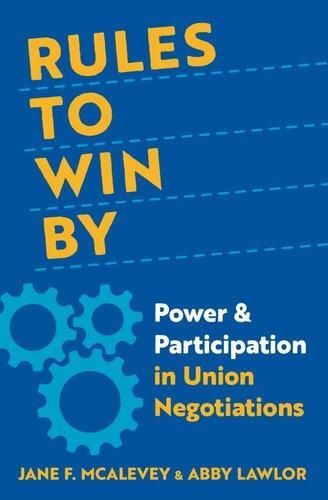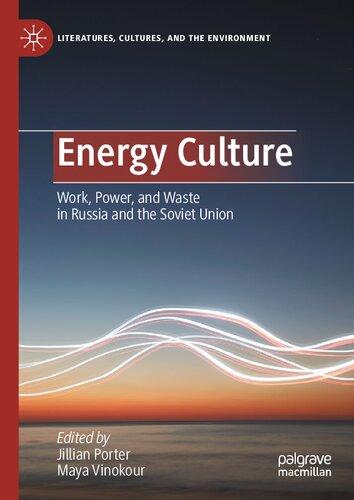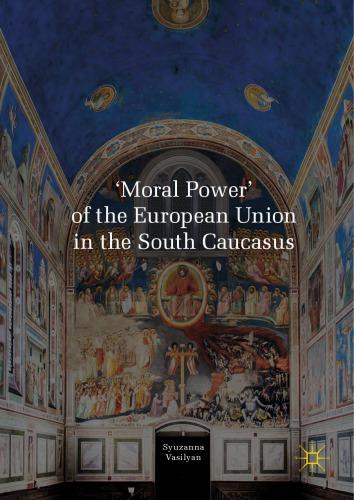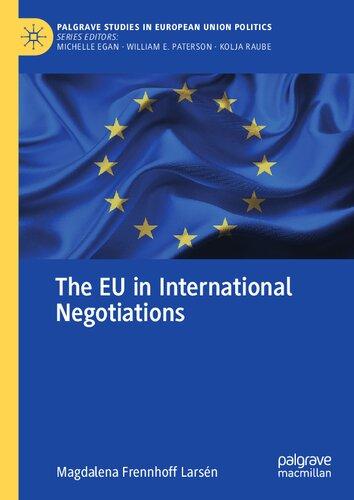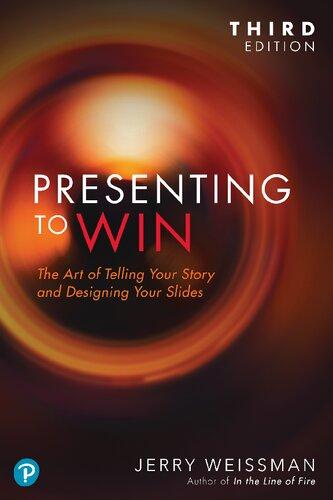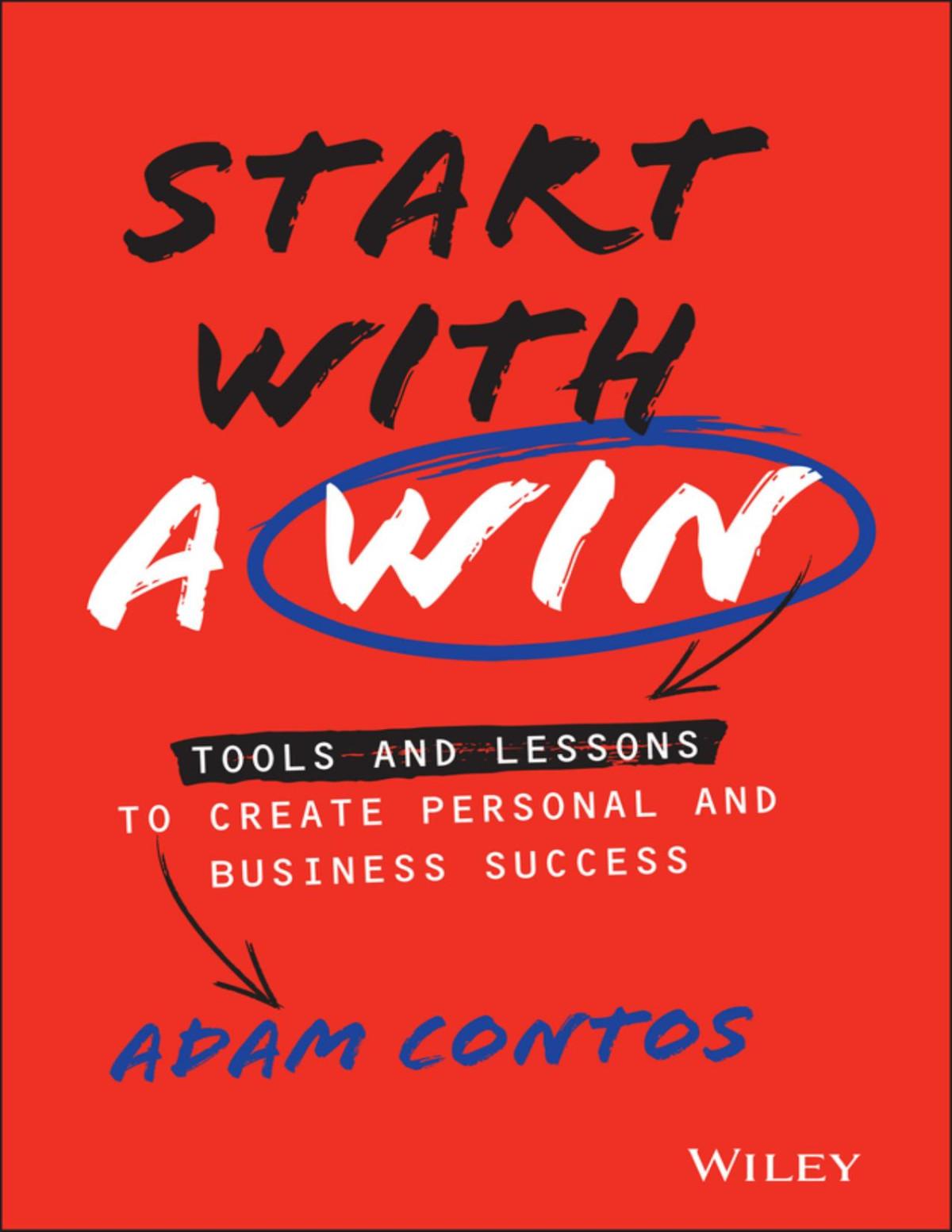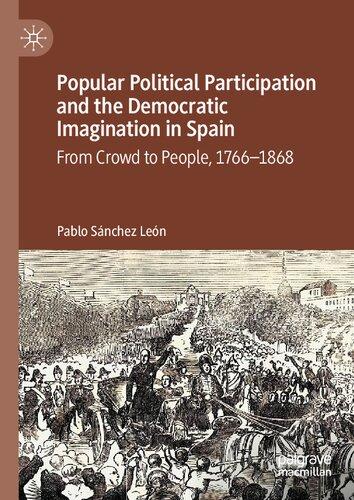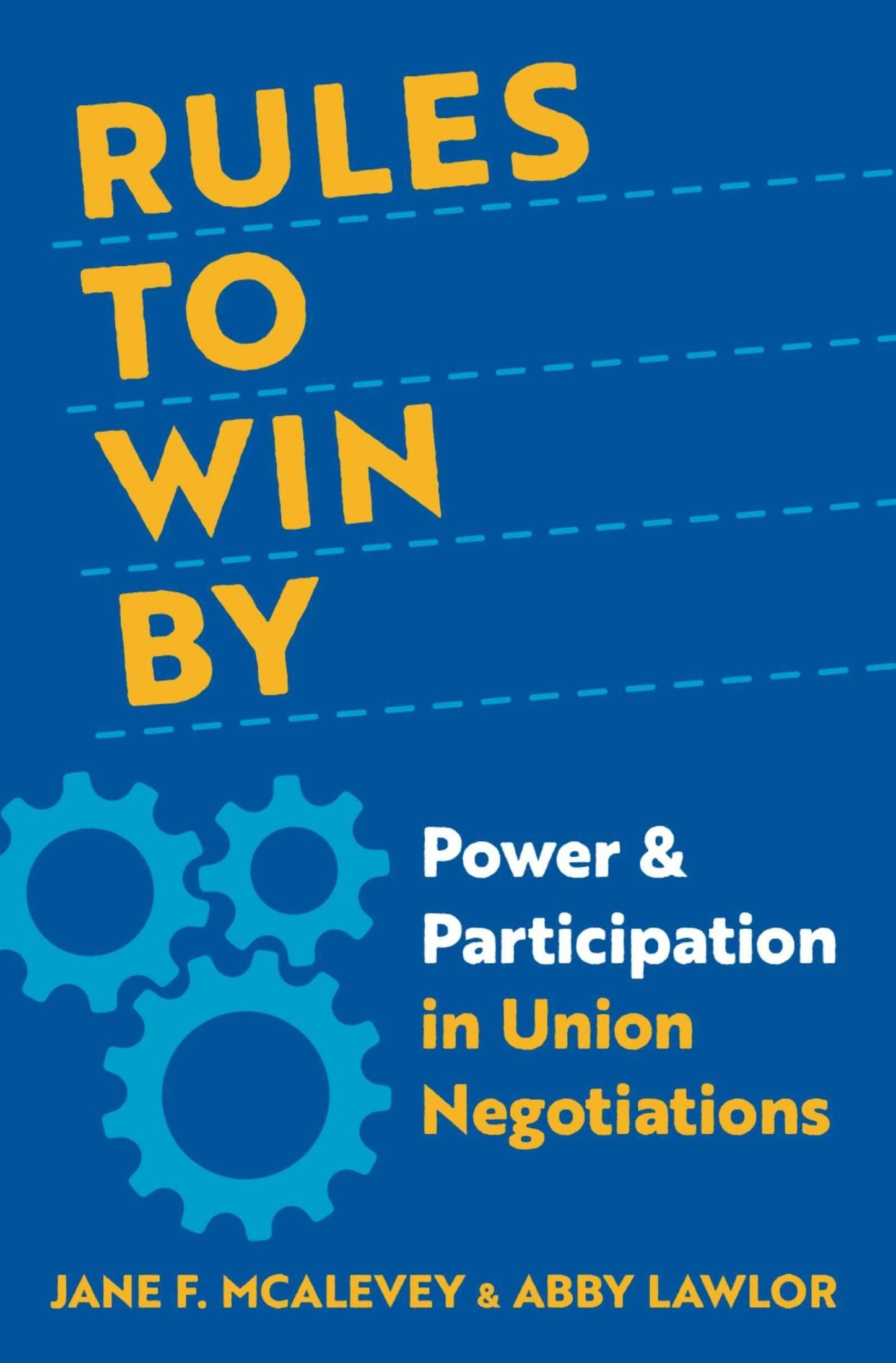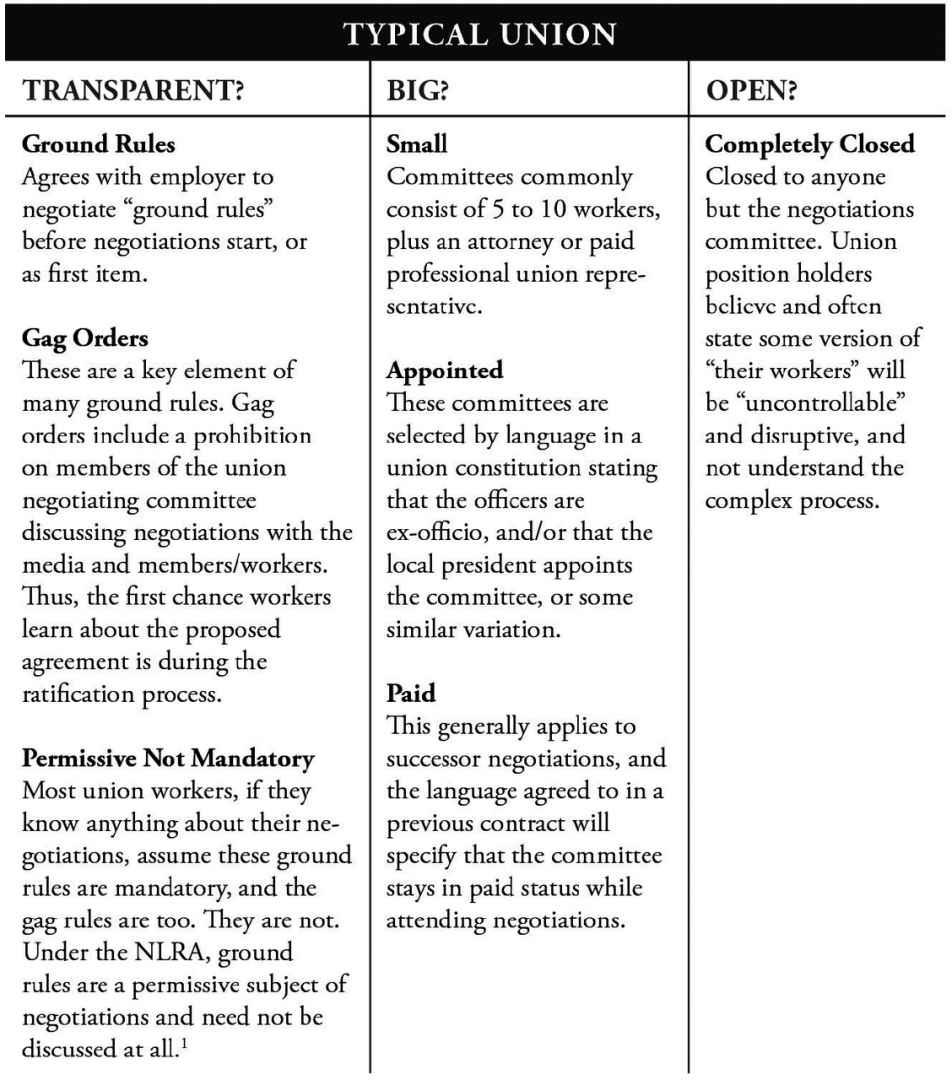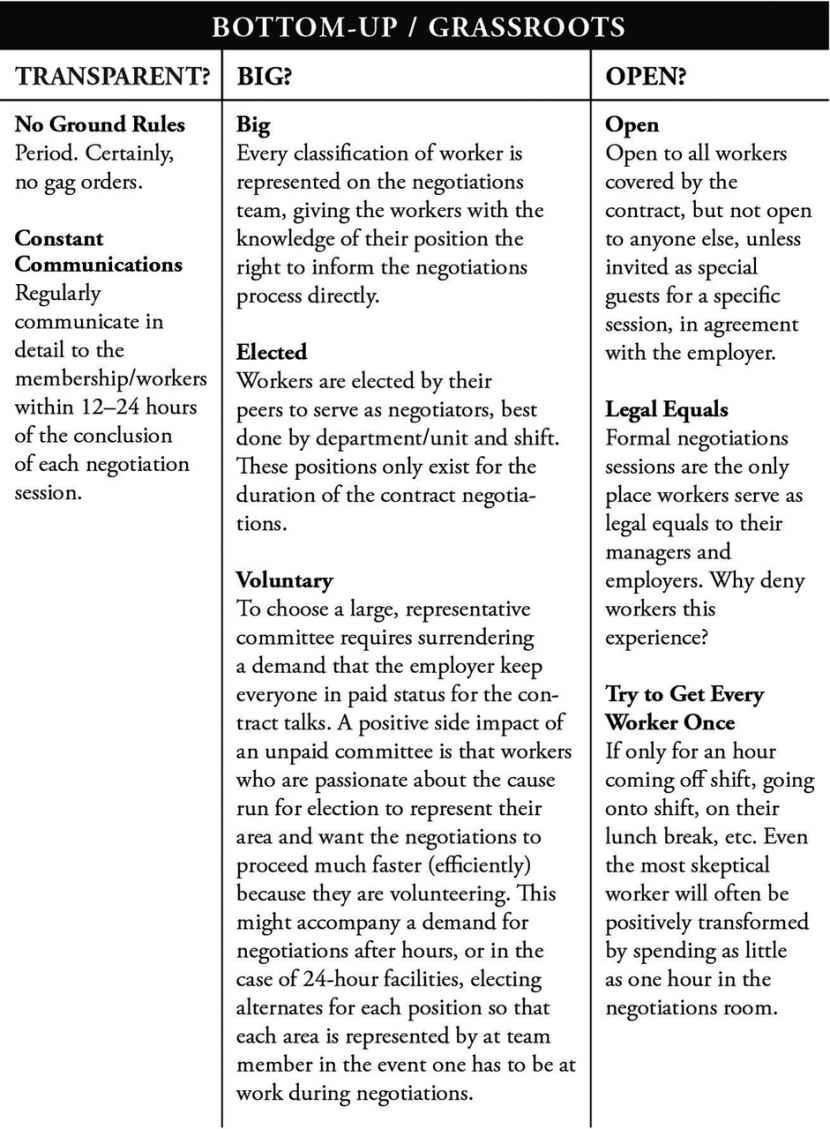Introduction Negotiations as Democracy Building
Most days, union negotiations don’t end with assault and battery charges. But I will not forget one that did: May 2, 2006. Instead of winding up the day as usual, writing follow-up notes after sitting down across the negotiations table from the hospital management and their hired guns, I was writing a statement for the police about being assaulted by an infamous professional union buster; his sidekick, a convicted international gunrunner; and seven private security guards. I had been corralled by these men toward an elevator in Desert Spring Hospital in Las Vegas. It wasn’t until I entered it and they piled in behind me that I realized I needed to get out of the elevator as quickly as possible. But they wouldn’t allow it.
I was positioned at the corner in front of the elevator’s controls because I had hit the ground-floor button even before they entered. Once I realized they were all getting into the elevator too, flight-orfight panic gripped me, and as the doors began to shut, I reached my arm out to stop the doors from closing. But Brent Yessin, the chief union buster, smacked my arm down and turned to pin me against the wall. I was lifting weights in those days, so I was strong enough that he had to grab hard and yank to lower my arm, bruising me and stopping me from moving; that is technically what constitutes assault and battery in police report lingo. As I later testified in legal proceedings, the worst wasn’t the hit to the arm. What left me shaking for months was an even more malicious, insidious act: pressing his body, with an erect penis, into my body and holding me there until the doors opened. That elevator ride under him may have been a minute. It felt like hours.
This was explicit sexual violence. If the Me Too movement had been more prominent in 2006, surely the incident would have been
national news—had we chosen to publicize it. But we didn’t, because to call any media attention to it would be a win for the employer in a set of the hardest negotiations I’ve ever led. Fights with union busters, even if today’s Pinkertons are less likely to use machine guns in the United States, really are that ugly.
The union buster’s goal was only partially to intimidate me directly. Any fire he could start between me as the workers’ chief negotiator and the negotiating committee—or between the negotiating committee and the rest of the workforce—would do. Any cloud of suspicion, whatever sexist nonsense he tried to leverage, could be lethal to my legitimacy among the workers. This is all par for the course in the repertoire of the nation’s top “union avoidance” consultants, and it meant, as disgusting as it was, that we had to be extremely disciplined. Thus, our strategy was to move right past the attack, publicly, and keep focused on the immediate challenge: beating an election to decertify the union that was to be held fortyeight hours later under the auspices of the National Labor Relations Board (NLRB).
I had come to that United Health Services (UHS) hospital that fateful day in May at the behest of several well-respected nurses who had been in negotiations with me since that morning. The session had been a useless slog, since the hospital’s negotiators believed that just two days later, they were going to win the decertification election. In their minds, how could they lose? They’d been running a terror campaign inside the hospital for several months up to that point, behaving in slightly less offensive but no less intimidating ways than I had experienced in the elevator. From their vantage point, why bother offering anything at negotiations on May 2 when, on May 4, they would be done with having to negotiate with their workers altogether?
During our lunch caucus on May 2, nurses were getting calls that there were more private security guards and men in suits stationed all over the facility than they had ever seen. The nurses asked me to go to the hospital after negotiations to do a walk-through to encourage the troops right before the vote. That was how I came to end a long day of negotiations giving a statement to the police.
Two days later, the workers, having built a rock-solid organization, would handily defeat their employer and retain their union. This was no small feat. But they would soon learn that the decertification election was only the opening salvo in management’s attempt to destroy their organization, and their hopes for improving patient care outcomes and winning better wages, not to mention a healthcare plan that would allow them to afford the kind of health care that they themselves provided. Over the course of the next nine months, the union busters never gave up. Hospital management swapped out the first lawyer they had hired (apparently he was too polite to the nurses) for a legendarily ruthless lawyer named Larry Arnold. Employers who hired Arnold had one objective only: destroy the union by negotiating them to death. Never arrive at a deal, wait until the contract has expired, declare impasse, and implement their lastbest-final offer.
Six months later, by early November, we were still in negotiations. Although we had reached tentative agreements on some minor articles in the contract—for example, drug-testing rules and paid time off for jury duty—practically speaking we were nowhere. It was time for us to put an end to the nonsense the only way we could: by informing the employer that we would be holding a vote among all workers on the current proposal from management. If the workers accepted management’s offer on the table, we’d wrap it up. But if they voted it down, the next vote would be a vote to authorize a strike. By early December, the first hospital strikes Las Vegas had ever seen were underway. By the second day, with two important emergency departments in downtown Vegas semi–out of commission, Nevada’s governor invoked a little-used part of the state constitution to declare a state of emergency, mandating us to go back to work for a defined sixty-day cooling-off period while the contract would be decided in negotiations with a gubernatorially appointed mediator. That the workers, after months of employer abuse, were strong and strike ready is a reflection of the level of organization they had built. Never letting a delay go to waste, the employer ratcheted up the sense of futility inside the hospitals, driving a message that the nurses would never win, no matter what. The governor’s order
afforded that I could pick one person only—not a worker—to join me to go up against Larry Arnold and whoever else Arnold chose for our two-on-two match-up. My choice was Larry Fox, a former leader of District 1199 New England and one of the smartest negotiators alive. The governor’s special mediator, however, was to be the longtime and highly respected CEO of the Harrah’s casino empire, Phil Satre.1 Satre gave us a fighting chance because he came with prestige, influence, and power, quite unlike a typical mediator assigned by, say, the Federal Mediation and Conciliation Services (FMCS). We had already been using a good mediator, the best the FMCS had, assigned for many months before the strike; obviously that hadn’t helped. Satre was perfect for the case because he understood how to work with a strong union and prove a company could still make boatloads of profit while respecting the basic needs of his employees through collective bargaining, because he had been doing it with the powerful casino workers’ union for over a decade.
Satre accepted the formidable task of mediating this dispute on condition that it take place in Reno, where he lived, and he offered some executive meeting space in the basement of Harrah’s world headquarters. This put 420-plus miles between me and the workers, the entire basis of our power. I was regularly reporting via videoconferencing with them in big group meetings where they sat together in Vegas, but being locked in a room with two of the most immoral and offensive management types I’d ever encountered was as far from my vision of negotiations as one could imagine. The agreement we achieved on day sixty was historic for our side, but not because I was especially clever in that room. It was because the workers had built real power in the workplace over the course of the negotiations, intensively involved a broad base of workers in hashing out our demands, and made clear that our ability to execute and sustain a supermajority strike was the bedrock of our power in negotiations and beyond. In the end, we won and won big.
Merely winning any contract, and thus the right to save the union and fight another day, was the minimum goal the national union had hoped for, and that alone would have been a success. But after the yearlong war waged by hired consultants with a blank check for
spending, we were determined to do justice by these hospital workers, win real material gains, and restore the dignity and respect that the twelve hundred nurses and skilled technicians who had been put through hell deserved. It was historic because it involved the first hospital strikes in Vegas, because we beat one of the most notorious union-busting consultants and one of the most vicious lawyers, and also because the gains were huge, including 100 percent fully employer-paid family healthcare plans, staffing rules the nurses never imagined winning, and eyepopping raises. The ratification votes were overwhelming, and the joy, not just relief, led to days of parties and celebrations inside and outside the hospitals.
Working on a few parallel campaigns in different Nevada hospitals and with some large public sector units that year, I gained a lot of experience with a wide variety of employers, who took some dramatically different approaches to negotiating. Not all of the fights were as brutal as the battle royale at Desert Spring, but across the board I found that certain patterns led to durable success. Because my early observations and experiences of union negotiations were with what is now called SEIU 1199 New England (1199NE)—a division of the national union known colloquially as 1199 in the old days—I had already learned that having more workers in the room was a good idea. It provided efficiencies by enabling real-time fact-checking of management’s claims. Having every type of worker and worker classification present allowed for faster, better decision-making. If my early training in 1199NE had predisposed me toward electing representative committees of workers, my experience in a right-towork-for-less state where union membership and dues are opt-in would quickly dispose me to fully open the negotiations process to all workers whom the contract covered.
My own practice has evolved from opening the negotiations room itself to setting a goal of having every worker show up at negotiations at least once, even if only for one hour at a shift change. I developed tools like Article Committees, which involved loads of workers not formally elected to the negotiations teams but structured into negotiations by becoming resident experts on the issues they cared most about in the contract. The more that workers participate,
the more they understand, and the more action they’re willing to take to win. With time I learned that, to build maximum power, every single step of the negotiating process—from information requests and member surveys to offering counterproposals and ultimatums at the table—must be made into an opportunity for organizing through intentional, mass participation. The informed, invested, and conscious worker organization built by structured high-participation negotiations is then also ready and willing to exercise that power lying behind its demands, to move a stonewalling employer, to deflate the fiercest union busters, and to turn the words on the page into conditions enforced in practice.
Given how the United States had developed by the time I became a negotiator in the early 2000s, the ideological terrain was and still is such that negotiations must have other goals, including strengthening the workers’ organization and the labor movement as a whole. At a minimum, this is because enforcing even the best labor contract relies primarily on the workers themselves. Given the grip that social media and huge misinformation campaigns have on the population at large, workers included, negotiations must also be used as a central tool for mass-scale political education. What scenario could be better for workers to learn which side politicians are on than when delegations of workers themselves seek their active support in trying to reach an agreement against large, intransigent multinational corporations making record profits?
The best advice in print that a union negotiator serious about winning can turn to was written by David Rosenfeld, one of the smartest labor lawyers in the United States. In his 1995 report titled “Offensive Bargaining,” he lays out how to turn employers’ vicious tactics against them, how to use information requests to avert an impasse, and much more. It is brilliant as a starting guide, but it has long been tough to find. You had to have a mentor like mine who shoves it in your hands and says, “Read this, build power, get to work.”
This book is a continuation of the core thesis laid out in No Shortcuts: Organizing for Power in the New Gilded Age. In that volume, I argue that the chief factor that scholars overlook and that
is absent from the literature on union decline is the one factor that unions and workers can control: our own strategy. Obviously, globalization and automation have had a profound impact, along with an ever more hostile legal climate. This book continues to address the primary and insufficiently addressed question of what to do given the endlessly analyzed structural constraints. Thus, this book is also about changing existing union strategy, but this time the focus is on the collective bargaining process.
The devastating impact of the COVID pandemic—the unequal access to vaccines, needed care, and income supports—is a disgusting reminder of why the working class the world over needs more power. One result of the pandemic, however, is a new upsurge in worker organizing. Forced to labor without basic safety protections while upper management sheltered in place, including on their yachts, workers began to fight back. By the summer of 2022, workers in over two hundred Starbucks stores; Amazon workers in Staten Island, New York; and workers at Apple, Trader Joe’s, and REI retail stores, to name a few, succeeded in winning NLRB elections in sectors of the economy previously immune to unions. How they negotiate their first contracts will be crucial to determining the kinds of unions they become: implements that workers actively use to change their lives, or sluggish organizations that settle for much less than can be won. This book is for every worker already in a union, for every worker fighting to get one, and for the many workers who will be in tough negotiations with employers as workers battle for justice on the other end of the pandemic. This book extends the theory and logic of high-participation organizing into high-participation negotiations.
Jane F. McAlevey
Society and Democracy in Crisis
Civic participation across all types of organizations is decreasing in the United States, including among union members.2 Corporations
have been waging—and mostly winning—a relentless war against workers and their unions before and since the passage of the National Labor Relations Act in 1935. The lopsided class war led by employers has resulted in 11 percent of the workforce overall being unionized, including just 6 percent of workers in the private sector covered by union agreements. Over the last two decades, the federal courts have emerged as a particularly successful avenue for corporate attacks on unions. In 2012, the US Supreme Court began delivering one antiworker, anti-union ruling after another.3 Given the considerably more conservative nature of the Court today and of the federal judiciary overall due to the court packing between 2016 and 2020, we can expect the courts to continue to take a battering-ram offensive against unions as an institution, much as they have with abortion and other rights many people presumed were settled law. The court’s open hostility to workers in turn threatens what even the most pro-worker Congress or well-funded and functioning NLRB might achieve.
In a legal context slanting more and more steeply against them, workers need to rely on themselves as the fundamental source of their own power to force bosses into negotiations and to actually win them. This is why the remaining unions—and especially newly forming unions such as the Amazon Labor Union and Starbucks Workers United rightfully celebrating their heroic election wins—need to be extremely serious when considering how they will conduct negotiations. Successor negotiations, that is, negotiations of unionized workers who’ve already won a contract, are likewise crucial opportunities to revitalize worker organization using a highparticipation approach. This is particularly important since most workers in unions today were not involved in the original organizing that produced the first contract covering the terms and conditions of their employment. In order to exercise these solidarity muscles, we need to build them at every opportunity. This concern is equally urgent for tenant unions, debtor unions, racial justice campaigners, and the climate movement—for anyone seeking to use the immense power of ordinary people to shift the scales toward justice.
The labor movement presents some of the best insights for other social movements into how to negotiate effectively, because negotiations are a regular feature of union life. Sadly, very few social movements ever build enough power to pull up to serious negotiations—the kind that result in a written, enforceable agreement. Social movements, when they do win, often fail to secure good enforcement language. To this day, most provisions of the Clean Air Act and the Clean Water Act, achieved some fifty years ago, have never been implemented. Not only can social movements learn from strong unions what it takes to build strong enforcement into an agreement, but also what it means to keep your organization strong enough to hold the inevitable opposition in check. This is true any time there are real stakes to a settlement, whatever the field.
Take, for example, the recent turns in the fight for dignified housing. Faced with the pandemic eviction crisis, more and more tenants have organized and formed tenant unions. Some are already taking lessons from the high-participation labor union approach. In San Francisco, the Housing Rights Coalition helped lead an effort that won the nation’s first ordinance granting collective bargaining rights to tenants once a majority become members in their building. These tenants are planning to adapt the high-participation negotiations approach to their now legally guaranteed right to negotiate with big corporate landlords. Farther down the coast, a tenants’ association supported by the LA Tenants Union forced a landlord to sit across the table from every single tenant remaining in their twenty-four-unit building following a months-long, all-out rent strike. The association won effective rent stabilization, forty-two-month leases, guaranteed repairs, and the right to renegotiate collectively.4 As with labor legislation, how legal protections will work out in practice—and how tenants can avoid giving up fundamental tools like the right to strike in the process—will depend on power built through methodical organizing and mass ownership of the project by members in these negotiations. Once workers win a good contract, the employer immediately sets out to undermine it. The only way to enforce the contract is to use an organizing approach to dispute resolution. Anyone fighting in any social movement will find something similar:
their ability to enforce agreements depends on what they do with the power they built to win the agreements in the first place. Grievance mill unions, or complaint-lodging nonprofits, are the death of the working class.
Most negotiations today function a bit like our mangled democracy: people believe that voting every four years in the presidential election cycle is all they must do to live in a democracy. Similarly, unionized workers are told that their role in negotiations is to vote to ratify or reject a contract presented to them at the end of lengthy, opaque contract negotiations. When workers haven’t been deeply engaged in the process, turnout for the ratification votes is minimal and apathy becomes the norm. The forces lined up against the working class take note. As more and more people in the United States who care about safeguarding democracy have learned quickly, what we do between presidential elections matters as much as, if not more than, simply voting once every four years. Union leaders should have learned long ago that simply allowing members to ratify or reject a contract settlement offer inside a unionized workplace is equally inadequate to safeguard workplace democracy, but they’ll learn it pretty quickly once the boss really goes on the offensive. Progressive politicians should take note as well, given the recent series of disastrously failed negotiations with opponents who are as determined to cede nothing and destroy their opposition as the ugliest union busters loosed on the workplace. An electorate, like a union, kept out of the substantive democratic process will be barely equipped to defend it, as we’re seeing. It’s well past time to change tack.
Wisconsin governor Scott Walker was a clear example of this kind of politician and employer, bragging about his war-on-terror-style union busting as he floated a presidential run in 2015. After the state’s teachers’ union and its allies fought valiantly against his move to gut many public employees’ right to collectively bargain in 2011, Walker bragged, “I want a commander in chief who will do everything in their power to ensure that the threat from radical Islamic terrorists does not wash up on American soil. . . . We need a leader with that kind of confidence. If I can take on 100,000 protesters, I can do the
same across the world.”5 If we joke that he’s a bit of a monster, it’s clear public school teachers are, to him, something much worse. We need an approach to negotiations that’s ready to build power to meet and overpower this level of well-organized contempt.
The twin crises in democracy and labor are in so many ways the same problem. In today’s extremely hostile climate many workers are somehow not even considered to be workers—like some in Silicon Valley and so-called platform or gig workers—and thus are effectively exempt from the limited worker protections that do exist. There’s also been a narrowing in some states about what’s on the table in public sector negotiations. Wisconsin’s Act 10 stripped most public service workers of the right to negotiate over basically everything except an annual cost-of-living adjustment. In New Jersey, teachers and other public employees were forced to contend with state legislation backed by Governor Chris Christie that revoked their ability to bargain over employer-paid health insurance (see chapter 3 for how teachers fought back). Given that working conditions in the public sector essentially determine the quality and quantity of public services the working class receives as a whole, strong unions ready to effectively win public-interest demands can help fill the enforcement gap, protecting hard-won rights in the years between increasingly gerrymandered elections. As Congressional policymaking has now entered a stage in which one party shows up with the intent of destroying the other side’s objectives—making a mockery of what was once the give-and-take of compromise—many of the insights in this book are directly relevant to how the working class can still win state and national policy battles.
How Unions Negotiate Is a Strategic Choice
Unions negotiate or renegotiate contracts every few years. For the most part, negotiations between employers and unionized workers are shrouded in secrecy. Seldom do union members experience the actual process of collective negotiations over the issues that are crucial, urgent, and relevant to their own lives. The purpose of this
book is to discuss how negotiations can be different—significantly different—from what has become the norm. Our hope is to start a robust conversation about how workers can still win big, even when their employer hires the top union busters whose only interest in negotiations is as a weapon to decertify the union, and how the act and process of negotiations relate to power, union governance, and the practice of democracy as a whole. The typical collective bargaining process in the United States involves a small committee of mid- to lower-level management and their lawyers, negotiating with an equally small committee of workers who are selected to represent the majority. The members of these union committees are typically paid, and they negotiate during the hours they’d normally be clocked in and working. The lead negotiators for the union are either negotiation specialists within the union (worker members or union staff) or, quite commonly, lawyers hired to lead the negotiations with the small committee. Most union committees are not elected, except in the sense that they involve elected union officials or position holders who, per the union’s constitution or bylaws, are ex-officio members of the negotiations team. The mechanics of collective bargaining are typically governed by ground rules that both parties legally negotiated. These rules often dictate confidentiality—gag rules for talking with media or even workers themselves—throughout negotiations.
No uniform rules govern the length of contracts, although there are many specifics at the federal, state, and local levels in the public sector, as well as various rules in the private sector. Generally, unions directly negotiate not just the contents but the duration of their contracts, and, though many don’t know this, the very rules for their own negotiations, like those participation-killing gag orders. Despite the ongoing degradation of workplace and civic democracy, most unions can still choose to transform the negotiations process from a closed one with little worker involvement into a process that serves as a key lever for rebuilding robust worker participation and power. The approach to negotiations laid out in this book builds the kind of collective bargaining that can serve as a dynamic classroom for
workers’ political education, where they learn about power, politics, and change.
One key overarching rule that covers all negotiations is that each side chooses its own team. That’s right. Unions decide whom to send to negotiations for the union. Moreover, because most workers care deeply about what is in their union contract—not just how much they are paid or what recourses they have for when they are treated unfairly by management, but a wide range of other issues, such as health and safety, schedules and hours, whether and when they may retire, and everything in between—union contract negotiations offer a cornucopia of opportunities to develop and build deep and broad solidarity. The depth of engagement provided by real highparticipation negotiation raises worker power to the level required to win and to sustain unionization despite the busters often brought to destroy unions during successor contract negotiations.
The reason that union-busting firms often surface close to a contract’s expiration with a hostile employer is the hostile nature of US labor law. Even after workers win their first union contract, the employer can still try to get rid of the union by initiating a decertification election, as described in the opening of this introduction. Under US labor law, a special thirty-day period occurs prior to a union’s contract expiration. The most ideologically antiworker employers understand that this window provides their best, unofficial chance to get rid of a union. Theoretically, the employer is legally prohibited from initiating a decertification petition, in which at least 30 percent of the workers represented by a union sign a petition to hold an election to decertify (unelect) their union. But in practice, this happens when an anti-union workers’ committee is formed, generally with expert, covert coaching by a union-busting firm in how to initiate a petition, spread anti-union talking points, and gather signatures. This is why it is so important to build mass participation in the workplace through preparations for negotiations because a supermajority that understands and has fought for a contract won’t fall for divide-and-conquer campaigns nearly so easily. Less dramatic than a decertification attempt, but no less dangerous, employers involved in the long game of undermining
worker solidarity often propose two-tiering many of the best provisions of a contract. In such a scheme, workers currently covered by the contract will keep all aspects of what they’ve won, but employees hired after the contract is ratified will be forced to accept cheaper, lesser standards. This practice is deeply corrosive and quickly pits new, often younger workers against the more senior or tenured employees. Two-tiering should never be accepted, as it decertifies the union in all but name for the new employees, which itself helps to undermine the base of longtime workers who thought the move would protect them. Avoiding a two-tier contract requires power, and also requires starting the political education about how bad two-tiering is before the contract talks start so that workers won’t ever agree.
Today’s extreme climate of animus and ideological warfare, combined with outdated and dysfunctional labor law, means that what might have been a garden-variety union-contract renegotiation can become a war in itself.
Power in Negotiations Flows from Active Participation at
andaway from the Table
This book hopes to build on labor lawyer David Rosenfeld’s tradition of offensive bargaining by explicitly outlining a high-participation, high-powered organizing approach to big, transparent, and open negotiations. In laying out the fundamentals of this approach, and showing them in action across a variety of situations, we seek to provide usable insights into the new directions many unions are taking to winning transformative contracts. Building on the model for organizing and winning unions outlined in No Shortcuts,6 and for changing society by reinvigorating the labor movement in ACollective Bargain,7 this book details how these principles work in contract negotiations, a process that is often treated as secondary to winning a union election, even among those who take a deep organizing approach to the certification process.
This book seeks to remedy that and prevent as many mistakes as possible, rookie or otherwise, along the way. The text should be helpful for anyone interested or involved in extremely tough negotiations in any context. For workers and the working class— whose only real option to win is how much power ordinary people can build to effectively withdraw their labor; or their rent if in a tenant union; or their cooperation with the norms of society as up against the climate crisis, a bungled response to a global pandemic, or a corrupt or sadistically motivated government.8 Whether the working class is fighting for climate justice, more affordable and better housing, or dignified workplace agreements, if our side can’t materialize the only effective weapon we have—durable mass participation and structured unity we can’t sit down to any negotiations of any kind and win real improvements, whether in the United States, the United Kingdom, Tanzania, Argentina, or Germany. All serious negotiations involving the redistribution of money, such as public expenditures or so-called private wages, are about power. And our approach to negotiations has to start and end with an approach that builds power before and through the negotiations themselves.
The literature on how to adopt an organizing approach to the mechanicsof negotiations simply doesn’t exist. While some important academic journal articles and a handful of books describe comprehensive campaigns where negotiations are a piece of a larger story,9 most lack the focus and detail required for those who seek to transform negotiations, to better align the negotiations process with an overall transformative power-building approach that makes the workers themselves the key actors. The books that do focus on the mechanisms of the collective bargaining process can mostly be divvied into two piles: business books like Getting to Yes10 and academic textbooks used to teach industrial relations.
Business books on negotiating can be a bit bewildering to those who have spent time in contract talks where the employer’s only goal was to utterly destroy the union and salt the earth where it once grew. The classic in this field, the book on learning how to succeed at negotiations, has long been Getting to Yes, written by Robert Fisher in 1981 (with William Ury in subsequent editions). At its core, the
book advances a theory called interest-based bargaining (IBB). Fisher simply and eloquently laid out four central concepts: focus on each party’s interests in the negotiations, and not their positions; separate the people or emotions from the process or sides; work cooperatively toward finding and achieving common interests; and agree up front to create systems that both sides can use to assess if the parties are reaching their common interests. Sounds reasonable enough.
Getting to Yes also coined the best-known acronym in almost any negotiations discussion, a negotiator’s BATNA (Best Alternative to Negotiated Agreement). That is, if negotiations fail altogether, what alternative course of action can a negotiating party take, and how would that outcome compare to a compromise settlement? In short, is risking an overshot worth it? This stuff is all crucial to have in mind, and the book has a lot of tactically useful material. But for a labor negotiator, its advice presumes a particular reality: the employer is not only willing to settle but is willing to allow the other party to continue to exist. Of course, not every employer hires the Brent Yessins of the world. In fact, one of the healthcare corporations in the 2006 Nevada campaign, Catholic Healthcare West, was pragmatic and nonideological enough to meet the union on IBB-based grounds. Compared with the UHS war, these negotiations were constructive, as both parties could agree that they shared a common interest, with such goals as improving patient care outcomes. Even there, however, the workers needed to back our version of the resolution to those goals with supermajority public actions, even if the employer’s relative willingness to “get to yes” allowed workers to keep a decidedly high-road tone. Each side must have power to check the other and to advance the cooperative approach to finding and negotiating a common interest. Corporations simply have too much power for workers not to demonstrate visibly that they are ready to use the only power they have: a real supermajority strike.
Most negotiations in the United States today fall somewhere on the spectrum toward UHS’s Nevada smackdown. Getting to Yes and its sequel, GettingPastNo, simply don’t prepare negotiating workers for an employer bent on an ideological crusade to wipe out unions altogether. In 2010, Fisher’s and Ury’s protégé, Robert Mnookin,
published BargainingwiththeDevil:WhentoNegotiateandWhento Fight.11 Mnookin does indeed take up a case involving unions: a set of unpleasant labor-management negotiations, where management’s tense relations with the union at the San Francisco Symphony often resulted in strikes, bad public relations, and bad feelings. But Mnookin’s devil, the symphony’s CEO, believed in unions, and he even believed they had a right to strike to get what they thought they deserved. While the attention to workers and a union conflict is an improvement over the glaring absence of unions in this team’s earlier books, people negotiating with much more devilish employers and union busters will need much tougher advice.
In 2016 Chris Voss released another blockbuster book on negotiations with a title that seemed to match the stakes that today’s unions face: Never Split the Difference: Negotiating as If Your Life Depended on It.12 Voss had spent decades as the FBI’s top hostage negotiator. As he explains, his strategies weren’t hatched in Ivy League towers but on the streets with bank robbers taking hostages and with international terrorists. Being held hostage comes considerably closer to what UHS had put the nurses through in 2006 in Las Vegas. Voss’s book highlights an important limitation about BATNAs: they could lead to lowering your side’s expectations by allowing you to achieve your “best alternative,” as opposed to setting higher expectations and developing the strategy to build the power required to win them. Now, in Voss’s case, as he explains, the best alternative would be something like letting half the hostages die and settling to save the other half a preposterous proposition. Like the above books, Voss’s NeverSplittheDifference offered plenty of good tactical ideas, like carefully framing and reframing questions to help the other side realize that yours simply couldn’t make their demands work from a logistical or practical perspective, and this kind of method has long been in the toolbox of a good union organizer or negotiator. His focus on emotions and tactical empathy sounds just right for hostage negotiations, and may come in handy on a micro level for social movements. But when we zoom out, as a good union negotiator should, to the future of the union and of the entire working class, workers need something more.
Unions in negotiations need to prepare themselves for a different kind of fight. Often enough, it’s one where your opponent flat-out wishes you didn’t exist, and the law and the pressure of time are slanted hard against you. This book seeks to fill that gap, reminding union negotiating committees to build and bring in the ultimate basis of their negotiating power workers themselves.
Workers and union staff looking for something more immediately relevant than these general books on negotiations—which mainly focus on deals between companies or 1-percenter married couples doing battle in drama-filled divorces—might turn to the many industrial relations textbooks in circulation, as they indeed focus specifically on the collective bargaining process between unions and employers. These books can provide some solid introductions to aspects of the process (though their direct relevance can lean more toward management), and often enough contain a few cases from real negotiations, or provide helpful and exhaustive glossaries of legal decisions affecting labor law.13 Some of the best help place labor strategy in a global context,14 but in most cases, they are written for a market of upper-level undergraduates and professional-level graduate students seeking to wrap their heads around the social phenomenon rather than trying to engage directly in it.15 Those that do give prescriptive advice often promote concessions, like gag orders and promises to not “negotiate in the press,” that highparticipation experience warns against.16
Coming as many of the classics do from another era in the employing class’s counteroffensive, these books tend to assume an almost quaint good faith on the part of the employer, very narrowly focusing on the hypothetical mechanisms of at-the-table give-andtake. This book seeks to show workers how deep organizing across workplaces and communities can help ensure that the employer is meaningfully and lastingly cornered into giving a lot more give and taking a lot less take. Indeed, in union negotiations with forwardthinking unions, deal-making or signing a good, final contract is just one component in a larger, self-reinforcing strategy to place the
empowered and democratized union at the command of the workers who created it.
For students of industrial relations and for workers, who both can become experts on their own industry in the process of negotiations, these pages present the building blocks of a high-participation organizing approach to negotiations. We take readers through the process of opening up the collective bargaining process, featuring both the fundamental principles of the approach and its application in case studies across a variety of winning campaigns for contracts in different industries and sectors. In reading about this approach in theory and real life, practitioners can learn how to apply it, and observers can see how its components snowball into an extremely powerful force at the negotiations table and beyond.
High-Participation, High-Power Negotiations
When workers who have low trust in their own organization—as many do in today’s typical do-nothing-or-do-too-little unions—are invited to take part in the very process at the heart of every union, they can quickly shift to having immense trust in and effective ownership of the organization. This can happen during one negotiation session, if not just one hour in a session, when the union goes out of its way to ensure that all workers understand the process and dynamics of negotiations, especially when previously skeptical workers see their employer’s often disrespectful behavior in negotiations. The old union saying that “The boss is the best organizer” comes to life when workers can witness, firsthand, management lawyers resolutely rejecting reasonable demands, leading skeptical workers to come to the conclusion that their active participation in a collective project is the only way to win changes that meet their pressing needs.
A crucial goal of the approach to negotiations we lay out in this book—transparent, big, and open negotiations, the high-participation approach—is something else urgently needed around the globe: the democratization of unions. The political theorist Robert Michels
warned us over a century ago in his discussions of the “iron law of oligarchy” that unions, political parties, and all organizations made up of everyday people have to build in guard rails against reproducing hierarchies.17 The sad and enraging story at the United Auto Workers, where a corruption scandal has revealed a disgusting and entrenched culture that has not served union members for decades, is only the most recent example of what mass union democracy can help preempt. Involving workers in the most important decisions removes the possibility of top union officials getting too cozy with top bosses. The mechanism is designed to keep position-holders accountable and has an important bonus: the approach also develops many more leaders, who build a much stronger union that is more firmly in the workers’ hands (see Chart 1).
1. Three Core Concepts of High-Participation Negotiationsa
CHART
